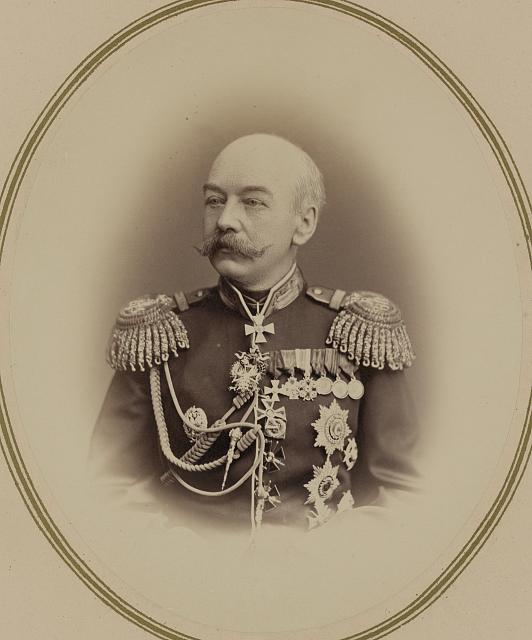
July 11, 1867 in the old style in the Russian Empire was formed a separate Turkestan Governor-General in the Semirechye and Syrdarya regions and the center in Tashkent.
To this reform there was an ambiguous attitude; disputes will not stop soon, whether it was "evil" or "good." But the fact itself remains: the creation of the governor-general was the beginning of a profound revolution in the whole life of the region, finally linked Kazakhstan and Central Asia with Russia, and through it - with the big "Western world". And this is a landmark date not only in Central Asia, but also in Russian history.
The problem of developing the management system in Kazakhstan within the Russian Empire does not lose its relevance in historical science. Reforms of the second half of the XIX century have transformed the mechanisms of management of nomadic communities. The problem of the historical evaluation of the influence of Russian administrative reforms is ambiguous. On the one hand, in Soviet historiography, all reforms were characterized as progressive. On the other hand, with the gaining of independence in historical publications of Kazakhstani historians, the assessment became diametrically opposed: all the colonial reforms of the Russian Empire towards the outskirts were aimed at strengthening the power of the metropolis, and by attracting representatives of the tribal nobility, the Russian administration sought to strengthen control over the territory of the Kazakh clans, reforms, land seizures, restrictions on migrations were brutally suppressed by Cossack troops.
To a large extent, the imperial nature of the Russian state in terms of the organization of the territorial administration system was manifested in a special relation to the creation of administrative structures in the newly annexed lands and the determination of their place in the overall structure of governance of the Russian Empire. The inclusion in the Russian Empire of territories with foreign speakers each time posed a problem for the authorities to include it in the general legal and administrative system. Considering the diversity of the territories attached to the ethnic, confessional composition, the level of historical development, the presence of elements of statehood, the nature of the accession and the attitude of the local population, they have established completely different organizational and legal forms of dependence on the Russian Empire.
The first attempts at institutional intervention in the administrative system of the Kazakh steppe were associated with the enactment of the "Charter on the Siberian Kirghiz" in 1822 and the "Charter of the Orenburg Kirghiz" in 1824, which led to the abolition of the khanate power in the lands of the Middle and Younger Zhuz.
In 1865, to study the effectiveness of the management system in the Orenburg and West Siberian departments and consider possible options for their transformation, a government commission was created consisting of the actual secret adviser F. Girs, Colonel G.F. Gens, a deputy from the Orenburg region on special assignments of Colonel K.K. Gutkovsky, a deputy from Western Siberia, Captain A. Protsenko.
The reforms of 1867-1868 changed the principles of governance and territorial-administrative division of Kazakhstan, as close as possible to the forms of imperial rule.
By a decree of July 11, 1867, the Turkestan Governor General, consisting of the Syrdarya and Semirechye provinces, was established on the territories newly acquired by the Russian Empire.

On July 14, Konstantin Petrovich von Kaufman was appointed governor-general with enormous powers of the autonomous ruler. The region was entrusted to the military governors, and the governor-general and the Turkestan military district were headed by the governor-general with the rank of commander in the district. The Semirechye region was 5, and the Syrdarya region was 8 counties. Management in the counties was concentrated in the hands of the county governor who had administrative and police power. The district chiefs were appointed by the emperor on the recommendation of the governor-general. Local management among the nomadic population differed from the sedentary. In the nomads, each county was divided into volosts, governed by volost governors, volosts - to the villages, under the management of aul elders. The difference between local governments was that these posts were dealt with through elections held in two stages. For the election of aul members in each aul from 10 tents were represented by one elected or "ten's manager". For the election of the parish governor of 50 tents, one elected or "Pentecostal" was also elected. Elections of aul elders were held at the village meetings, volost - at volost congresses.
Volost governors, elected from the local population, were endowed with police and administrative authority and were responsible for maintaining calm and order in the volost. Thus, officials from the Russian bureaucracy were appointed to the upper levels of the administrative structure of the Turkestan general-governorate, and representatives of the local population were elected to the lower levels.
October 21, 1868, "Decree on the transformation of the management of the Kazakhs of the Orenburg and Siberian departments," and simultaneously with the decree adopted the "Provisional Regulations on Governance in the Urals, Turgay, Akmola and Semipalatinsk regions," through which the Orenburg Governor General included the Urals and Turgay Region, and Akmola and Semipalatinsk regions - governor-general of Western Siberia. The regional administration consisted of a military governor and a regional government. "Provisional regulations" were introduced before the adoption of a new administrative-political code.
Thus, as a result of the administrative-territorial reform of the second half of the 19th century, a new management system was created in Kazakhstan. Traditional Kazakh institutions of power (khans, sultans) lost their former status, but retained the possibility of further development as officials of the Russian state. Because of the need to strengthen power, Russian officials were appointed to key management positions. From the local population to the service began to be taken not only sultans-Chingisids who received a Russian education, but also came from "kara suyek", bi who had influence among the people.
Translated by Raushan MAKHMETZHANOVA
